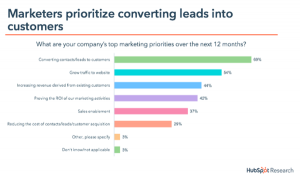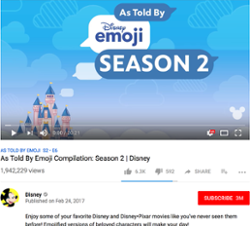 The past two articles I’ve shared on blogging are full of introductory advice and handy resources to get you started with your own blogging efforts. From now on, I plan to go further in-depth with my curated content to help you get adjusted to regular blog activity.
The past two articles I’ve shared on blogging are full of introductory advice and handy resources to get you started with your own blogging efforts. From now on, I plan to go further in-depth with my curated content to help you get adjusted to regular blog activity.
Did you read the last two articles in this series on the Business 2 Community site? I’ve listed them here:
There’s no need to read through each article if you’re already further along. I make sure each post has enough helpful content to stand on its own.
Keep reading to learn more about maintaining an organized blogging system, including developing a content calendar.
What can I do to stay organized?
It’s great to have your blog site set up with your ideas flowing and boss approving, but how are you staying organized? Have you chosen a suitable editorial calendar process to fit your needs?
Here are a few articles to help you with that…
Blog Planning
To start, do you have an established and approved business blogging plan? It would be best that you finish this first because it is meant to guide your content.
Marya Jan of GetResponse writes about “6 Easy Steps to Create a Business Blogging Action Plan.” She makes a very key point near the beginning that you should definitely keep in mind:
Don’t confuse business blogging with personal sites.
They’re not the same. They really aren’t. If you or others are doubting a blog’s value because of seeing personal ones in the past, it’s best to research what business blogs are actually like and why they aren’t the same.
There are two other points in particular that I agree most with:
From the very beginning, you should be focusing on your target audience’s needs rather than your own. This should be your blogging priority.
Don’t use the subscription autoresponder that came with your web host (WordPress, for example). If you’re just starting out, I recommend you focus your priorities on getting your blog established before worrying about an email autoresponder. However, that will quickly become an urgent need, so don’t forget about it.
Marya gives several more recommendations that you should definitely take a look at when you’re setting up a blogging plan and strategy. It has been very helpful for me in staying focused and on point, so I’m sure it has the potential to help you with your own organization as well.
Content Calendars
If you’re looking for help determining which type of calendar to use and how, Kevan Lee of Buffer provides a very thorough resource for choosing a content calendar. The handy part about this article is: it can help you decide on a calendar that works for all your content marketing, not just blogging. Use these options to plan out your blog content, but don’t let it stop there. Use one or more of the tools to plan your efforts from idea development to social publicity to measurement.
My calendar recommendation:
Out of all the options Kevan includes, I suggest a different approach that most wouldn’t consider after reading this article. While CoSchedule has an amazing service that I’d love to try someday, I typically stick with a free, self-managed Excel file for my own blog activity. It’s the easiest, simplest way to go, in my opinion. When I’m not using Excel, I use Microsoft Word for writing my content. Sometimes, it’s best to stick with the basics and stay clear of the excess applications when you have the opportunity to do so.
Do some research of your own, using this Buffer resource. An editorial calendar is crucial to staying organized.
Once you’ve chosen how you’re going to organize your blogging process, check out this article by Jodi Harris on the Content Marketing Institute website. This editorial calendar checklist goes further in-depth about what essentials belong in your content schedule. Jodi gathered some of the best articles from the CMI blog to help you with your efforts.
I most appreciated the resources in the third section:
Keep your calendar filled and focused
At this stage in my content creation, I often need help with this area of blogging. Regardless of whether you have a backlog of content ideas, this resource is especially helpful with turning those ideas into actual content.
If you’re looking for further assistance with your editorial calendar, Jodi’s article is very resourceful.
Editorial Guidelines
The last resource I provide in this article is by Kristi Hines on the CoSchedule blog. She gives you ideas on creating editorial guidelines to help with content consistency.
I really enjoy this article because it’s thorough. Kristi doesn’t just focus on one type of blog. She covers a range from solo blogging to guest hosting. My favorite point was the importance of creating “reader personas” to help you and your writers understand to whom they’re writing their content. It’s important for everyone to know what your goals are and who your audience is.
Kristi suggests you publish your final editorial guidelines on your website, and I think that would definitely help if you allow for guest posting, such as Business 2 Community does, but not if there’s no reason for it.
Keep reading Kristi’s article to learn even more about editorial guidelines. It will definitely help you establish the right tone and focus for your blog content. As a result, you’ll know how to keep your blog behavior organized with consistent content.
Your turn!
- Have you struggled with blogging organization?
- What are you doing to keep a structured content system?
- Do you have any suggestions for others who are struggling with this topic?
Leave a comment!
This article originally appeared in modified form on the Marketing Innovator blog.
(308)









